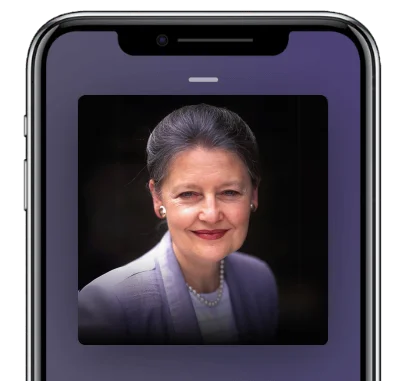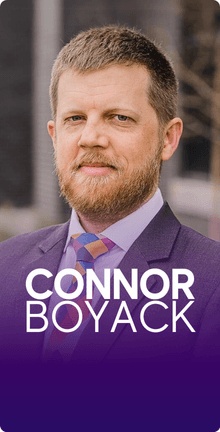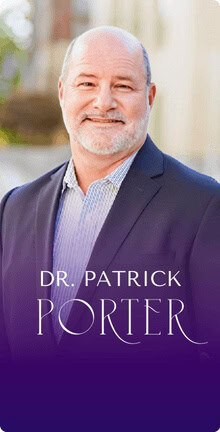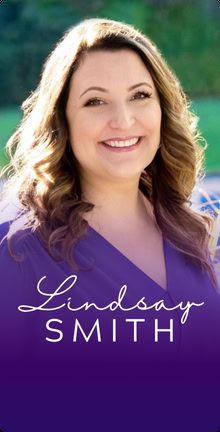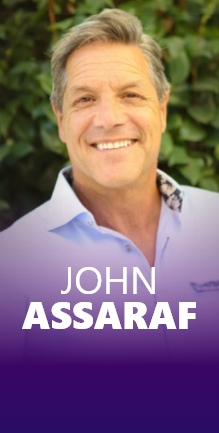In this Episode
- [00:39]Stephan introduces Janet Doman. She has been a pioneer in unlocking what is possible for brain-injured children with the work she has done as Director of The Institutes for the Achievement of Human Potential.
- [05:44]Janet talks about how brain-injured kids ages two to four can read, giving the parents a different perspective of their child.
- [12:45]How can you help a child in their development after they have survived coma or severe brain injury?
- [17:48]Janet points out how important it is that every kid is unique and different in developing a better world.
- [23:10]Janet tells stories of well-child cases that have shared their advantages with their peers because of their acquired knowledge from the program.
- [29:28]How massive of an impact can physical stimulation be on a child’s development?
- [39:12]Janet speaks about today’s parents strapping their children, depriving them of their chance to move and develop their bodies earlier.
- [45:17]What’s the best way to communicate effectively with a baby?
- [51:20]Janet explains how kids are natural mathematicians and how you can lead them to discover and learn bigger things.
- [54:03]Visit The Institutes for the Achievement of Human Potential’s website at iahp.org to check out their books, helpful resources and learn more about child brain development.
Janet, it’s so great to have you on the show.
Wonderful to be here.
I think it’s important for our listener to understand how important this work is, not just for brain-injured children, but for all children, especially at the very early ages, when we tend to not give them enough stimulation because we just don’t know any better.
As a parent of a young child myself who’s about to turn 19 months now, I just see so much potential. I had no idea that I could, for example, teach him how to read as a baby. It feels like I almost already missed the boat that he’s so old now.
I know that’s not true, but there are so many opportunities for these little babies to learn how to read, do math, and learn multiple languages. Even if we don’t speak the languages, we can still teach them the stuff. We can teach them gymnastics. We can teach them to crawl when they’re just so, so tiny. It’s amazing.
It was so inspiring to attend the workshop that you put on back in April. I want our listener to understand the impact and the power of the stuff that you guys are doing for all these children.
We found that our children learned rapidly.
Well, I think a little bit of history is probably worthwhile to put what we do in context and understand why we are so excited about it and so dedicated to getting the word out to parents. Our primary work was and is with brain-injured children, mostly severely and profoundly brain-injured children. The whole range of children, from the most hurt to the least hurt.
As we were treating these children—this goes back to 1960—we decided that because they were hurt, because they were home, because they were going to be behind in virtually everything, that it would be a good idea if we began to teach them to read.
At first, when we were naive, we didn’t know what we were doing. But we found that our children learned rapidly. We were teaching four-year-olds, three-year-olds, and two-year-olds. In fact, we found the younger we started, the easier it was. We just had to pay attention to making sure the materials were visually appropriate, i.e. big enough, so the kids could see them. By 1960, we had hundreds (possibly thousands) but certainly hundreds of two-, three-, and four-year-olds severely brain-injured children who were reading their heads off.
First, there was the fact they could read. Secondly, there was the fact that they adored it, that it added a dimension to their life that was clearly very important. Third, it made their parents look at them with totally different eyes. They stopped looking at them as if they were cute little babies and they said, oh my goodness, he’s very intelligent. I should be teaching him, I should be talking to him in a higher-level way. I should be interacting with him. I should be giving him more choices. I should be including him more.
We found it profoundly changed the relationship. At the end of the day, that seemed even more important to us than the happy side effect that they could read. We began to look at this and say, well, we’re teaching our three-year-old severely brain-injured children to read. By the way, when those kids got to be four, five, and six, they would be reading in a fourth or fifth-grade level with 90% comprehension. This wasn’t just some little game for babies that went away. It got bigger and better.
By the time our hurt kids were seven or eight years old, they were intellectually so far advanced compared to their peers that it was clear their well peers were never going to catch them. That is still true today. We couldn’t look at that for very long without asking, what’s happening to the well-child across the street? The average first-grade classroom, 35%-40% will fail to learn to read at all.
The answer is so easy, so cheap, so simple, so profound.
In the city of Philadelphia, today, 87% of the Hispanic youngsters in the city of Philadelphia will graduate with only a fraction of them able to read and write at grade level. 87% will not be able to read or write at a high school level. That is outrageous. That is unforgivable. It’s completely fixable with a two-year-old with a red magic marker and some poster board. The answer is so easy, so cheap, so simple, so profound.
My father said, “Okay, I have to let mothers of well children know this.” He sat down in 1963 and wrote How to Teach Your Baby to Read. Random House published it. Bob Loomis, his editor at Random House, said this is going to be one of the most important books Random House ever publishes because we’re creating our consumers for the next 50 years. It was quite a sensation, not only here in the United States, but in Great Britain, in France, in Japan, and across the world. It’s in 25 languages.
That book started us on a mission we weren’t really totally prepared to go on was teaching the parents of well kids. We thought our job was hurt kids. It’s still a big job. We realized we couldn’t ignore the well kids because our hurt kids have to graduate into that world. We decided it was our job to make that larger world much more capable.
That really was the beginning of all of this right back in 1963. It was the hurt kids who spurred us to do it. They’re still our inspiration because they’re amazing.
That’s so inspiring. Your work is so important. You help hurt kids in areas where they’re hurt by autism, by various kinds of diseases, birth defects, and so forth. What are some of these issues that you come across that you help?
One of the most important things that parents do when they raise their babies is create their grandchildren's parents. Share on XWell, we treat problems that occur in the central nervous system—injury to the brain. Now, when you use the term brain injury, most people think car accidents or head injuries. But in fact, most brain-injured children are not diagnosed as brain-injured, oddly. Instead, we have some 350 different symptomatic labels that our children will be given. The most common cerebral palsy, autism, developmental delay. Literally, there are 350. These are not proper diagnoses. They’re symptomatic diagnoses.
Instead of saying what the cause is, you actually just pick out a symptom. There’s a very good chance you’ll get sucked into that symptom. If we called chicken pox red spot disease, there might be a good chance that we’d end up trying to treat all those spots. That would be pretty futile and it would be pretty disastrous to do that.
I think we all know that treating a symptom doesn’t work. But look around us in the world, how much of what we look at that’s a problem is a problem because we’re just treating the symptom. We’re not really looking for the actual root cause.
The root cause of all the kids labeled with those 350 different symptomatic labels is disorganization to the central nervous system—an injury to the brain. Why is the world so afraid of the brain? I’m not quite sure because I was raised in a world of great admiration for the brain.
The brain is the most fixable organ of the human body. It runs everything. It has a huge amount of area that we don’t use—the great percent of our brain we haven’t even touched on using it yet. We shouldn’t be depressed if we have a problem there. We should just roll up our sleeves and say, “Gee, we need stimulation, and we need opportunity.” When we supply those things, the brain literally grows by use. It literally grows by use and grows rapidly.
The brain is the most fixable organ of the human body.
We treat all the way from the child who’s comatose and not expected to recover, to the kid who just might have a mild reading problem but be failing in school having his life ruined by that failure and every kid in between. They’re almost all been given symptomatic labels.
Wow, this is hard to wrap your head around—the impact that you can have on somebody who you think is just completely without hope. For example, somebody who’s comatose, has been for many weeks, and doesn’t have a very good prognosis, how do you help a child who is in a coma and does not seem to be responding?
Well, again, it really doesn’t matter whether the insult to the brain is a massive profound insult, as it would be perhaps with the comatose child or a relatively mild insult. The answers are the same. That is stimulation and opportunity.
We have five pathways into the brain. We can see, hear, feel, taste, and smell. Those are the pathways in. Those are where stimulation has to take place. In fact, that’s what we do with a comatose patient. We provide visual, auditory, tactile, gustatory, and olfactory stimulation.
With someone who’s literally in a coma, we may do that around the clock. The frequency, the intensity, and the duration, those three dynamics may be quite impressive because we want to get that person back to hearing, seeing, feeling, tasting, and smelling as fast as possible so that we can then provide motor opportunities to move, to speak, to use your hands. But our big job is sensory stimulation.
We also know now from modern technology, from using the functional MRI, that some comatose patients are actually hearing and understanding everything that’s going on around them, even though they look like they are deeply obtunded or unconscious. Not all comatose patients themselves are in exactly the same state, but it’s very exciting to see the work that they’re doing with a functional MRI to be able to prove this patient is hearing everything.
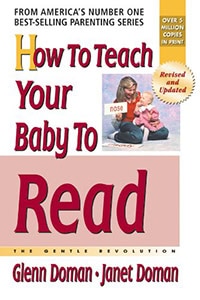
Now, we just got to get them out of this terrible, terrible predicament. If you provide the correct sensory stimulation with the right frequency, the right intensity over the right duration, the patient has a pretty good chance of being aroused.
Amazing. Do you have an example of a success story in this regard? We’ll get to well children in just a minute or two, but I’d love to close out this topic with success and a tangible, very real success for our listener to hear.
There are many success stories. By the way, for people really interested, they are up on our website. Not all of them, of course, but some of them are there. You could put in blindness and see the success stories with blindness. You can put on deafness and see the kids who came to the deaf.
I remember one little girl who had a traumatic injury. It’s kind of a terrible story but has a good ending. She was on vacation with her parents in a beautiful hotel and it had a balcony over the lobby. She was only two and she fell off the balcony onto a marble floor, almost two stories below. She got a very, very serious head injury. Yes, she was in a coma and not expected to live. Today, she’s doing pretty well. Her story is up there on our website.
You have an almost two-year-old yourself. So you know, just hearing that story changes your heart rate. It’s terrifying because a two-year-old can get into trouble so rapidly. One second they’re fine and then the next second they climb out the second story window. I hope we’ve seen and heard it all by now in terms of things kids can get up to.
I was just looking at a story yesterday of a little girl. She was well until she was 18 months and then she fell into the pond and almost drowned. She was unconscious for quite a long time, more than days, weeks probably. She’s getting better. She’s getting there. She can see now. She can read. She’s beginning to move.
Again, there are many, many such stories and they’re very inspiring. But they’re really brought about by mom and dad, older brother, younger sister, grandmother, everybody rolling up their sleeves and saying, we’re not going to leave this one behind. We’re going to take this one with us. We’re going to get this kid back on the road. Human beings are really amazing.
Human beings are really amazing.
Very resilient. Much more than we often give credit to. I would say even beyond resilience—antifragile. This concept I learned from the book Antifragile by Nicholas Taleb. The concept is applied to things like economies, immune systems, companies, but I don’t see it applied to human beings and their potential, their soul, their personalities, their intellect. I see that as antifragile too.
If you don’t stimulate the system, it doesn’t grow as much. You mentioned stimulation and opportunity. If you stress the system, Mother Nature is a great example of an antifragile system. Because it gets stressed—toxins, natural disasters, and all that happens—Mother Nature becomes stronger. We become stronger if we get those kinds of stressors.
Everything happens for a reason. It’s hard to hear or see it many times, especially if it’s a tragedy. In retrospect, oftentimes you can glimpse the truism of that.
I’m curious to hear what a good child might be able to accomplish. If you have a case example in mind of maybe one of the very youngest babies that have learned how to read, do complex math problems, or understand multiple, multiple languages, it’d be fun to hear a few examples of those.
Wow, so many kids over so many years. First of all, I want to say it has been a lot of kids who I’ve been lucky enough to be part of their lives right from their birth. Some of those kids are now 45 and having their own kids. That’s really exciting too because they do a fabulous job with their kids.

I think, myself, one of the most important things that parents are doing when they raise their babies is they’re creating their grandchildren’s parents. Having been through several generations, I feel that’s very important because it’s not enough for you and I to do a great job with your little boy. We want your little boy to carry on and be an even better parent for your grandchildren to really put him on your shoulders and put those grandchildren on his shoulders. I think that’s so important that it carries on.
We see the contagion of insanity. Now, we’re ready for the contagion of sanity and to spread that contagion. I feel that very strongly. One of the things I would say—you’re asking me for an example of a kid—in looking at all those kids as a group in a broad brushstroke, the thing that I would have to say knowing them now, knowing them from when they were a newborn to now they’re 35 or 40 years old, each and every one of them is very different.
I think it’s important to say it. One of the myths that you and I are raised in—it’s kind of in our culture—is this idea that if you made a whole class of kids smarter that somehow they’d come out like little robots or little automaton. The movies imprinted people with the idea that we could create a thousand little Hitlers or something.
Nothing could be further from the truth. The more we teach a child, the more he becomes himself. He turns out to be absolutely unique, different from the kid to the right, the kid to the left, the kid in front, the kid behind. I think for planet Earth, that’s very, very important. We need a lot of answers. We need everybody to be themselves. We need everyone to be part of the answer, to be a problem solver. That’s what I see in our kids.
Each and every one of them is very different.
When they get back together again, which always amuses me, with a Christmas party or spring party, when our kids come back, I always forget which kids were in which class. So are they. They don’t remember, oh, he was in the junior class, I was in the senior. No, now they’re just one big class because they all took care of each other in school. They didn’t see themselves as segregated into eighth grade and third grade.
These were barriers in my school. In my school, you really didn’t associate with people in other grades. The older grades wouldn’t pay any attention to you. The younger grades, well, they were the little kids. In our little school, it was like a one-room schoolhouse where we had the 8-year-olds helping the 4-year-olds and the 4-year-olds helping the 12-year-olds. Today, when they all get back together again, you see that they’re just one big family who’s still very close to each other.
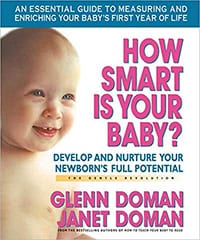
I think that when I interview them myself, one kid, I’ll give you an example because you probably know her to some degree. The book How Smart is Your Baby? It’s her baby that’s the kind of the star of that book because I needed baby pictures. I called her on the phone and said, “Oh, I need baby pictures, I need them fast.” It’s her little baby, Maria, who is the baby we see in that book. Her mother, Beatrice, started on the program from birth, so I knew her from a baby.
When she was here the last time with her mother, it was now three generations—mom who we taught; Beatrice, who was a newborn; and then now Maria, her newborn—she had had a very successful academic career everywhere she went. She was Mexican so she went to school in Mexico, but she also went to school in France. She ended up doing, I think, a year at the London School of Economics.
I said to her, “Beatrice, what was that like?” She said, “It was just a great deal of fun.” I said, “Fun? The London School of Economics? I doubt that for many people, that would be the first word they would use to describe it.” She said, “Well, it was just a huge amount of fun.”
I said, “Was it fun for everybody?” She stopped there and she said, “No, it wasn’t.” She said, “My roommate, a close friend, was so stressed the whole year. Every night she’s staying up late, she’s studying, she’s worrying she’s not going to pass. She’s worrying she doesn’t get it.”
I said, “Well, if she had so much work to do, didn’t you have the same work?” She said, “Yeah, I had exactly the same work, but there was a difference.” She said, “Please know, my mother did not teach me things at home that had anything to do with the London School of Economics. She had no idea what was in my future when I was three years old. The things I learned there were completely new to me as they were to my roommate.”
She said, “The difference was I just knew how to go about it. I knew it was going to be okay. That I could read fast, I could cover the materials quickly, and so I approached it from a spirit of play and fun. Whereas my roommate was constantly thinking she was going to fail and she wasn’t going to be good enough.”
The more we teach a child, the more they become themselves. They turn out to be absolutely unique. Share on XShe said, “It’s not that I was smarter than she was. It’s not that I knew things that she didn’t know. It’s just that I had confidence that I enjoy learning and that I don’t think it’s dangerous to learn. I don’t think it’s scary.” She said, “It makes all the difference.” That is something I hear repeated from our kids.
Another kid who started on the program in 18 months was reading very well by the time he was 3. He was a very, very fast and good reader. He just went through everything in his household and he got a full scholarship to Princeton. That’s pretty good. Princeton is not easy to get into. It’s one of the hardest universities.
When he finished I said to him, “Princeton, you probably had to work hard.” He said, “No.” I said, “Did you like it?” He said, “It was wonderful. I want to do it all over again.” You could see he really meant it. He felt it deeply. I said, “Well, why was it such a pleasure and so easy? Wasn’t it a lot of hard work?” He said, “Janet, wait until you hear this. The Princeton professors not only give you your reading list, but they give you all the books they used to create the course.” I said, “And so?”
He said, “And so I would read all of those books first. Then, I had a choice. I could go to the class. If it’s a really good teacher, I would go.” But he said, “Some of them were kind of boring and not that interesting. If they weren’t that interesting, I’d stay in my room and read because I didn’t need the class. I had already read all those books.” He said, “I didn’t really have to study much for the tests because I’ve done all the reading. I knew everything they put into it.”
I said, “Well, if that’s so simple and so easy, why doesn’t everybody do that?” He said, “Janet, it’s a lot of books. I read really fast, so I have a huge advantage. I can read a book maybe five times faster than my friends. It is a huge advantage. I’m not smarter than they are. It’s just that I started so early I read really fast and so I can read five times as much.”
They want to make sure they’re never the smartest person in the room, there’s always somebody to learn from.
I said, “Well, why do you think you read so fast?” He said, “That is the silliest question I’ve ever heard you ask. I read fast because I’ve been reading since I was 18 months old. That’s the trick. I just started when it was easy.”
The thing I like about those two conversations is the kids know, they understand the process. They didn’t go through their lives saying I’m the smartest person in the room. They don’t think that. By the way, they don’t want to be the smartest person in the room. That would be a bad day for them. They want to make sure they’re never the smartest person in the room, there’s always somebody to learn from.
I love that because there is no arrogance in them. They understand the ladder that they climbed. I really love that. We spend a lot of time not wanting them to be competitive. We don’t think competition is a good thing. We think it’s a bad thing. We eliminate it wherever we see it. That shows in our kids. It shows.
Wow. I love those stories. I can really relate to what you were saying about the one student who oftentimes wouldn’t go to the lectures, would just read the books, and make the decision based on the quality of the lecture. I did that. I did that throughout college and even in my graduate studies.
I would skip a lot of the classes that I thought, this isn’t a very good teacher. I read the books. I wouldn’t read the expanded reading list. That’s pretty clever. I would learn a lot from the books and I wouldn’t need to take the lectures as well.
I’m curious, how does reading then dovetail with climbing ropes, learning to swim, speak multiple languages, play the violin, all these other physical and other types of mental stimulation? How do these all fit in so it’s part of a puzzle?
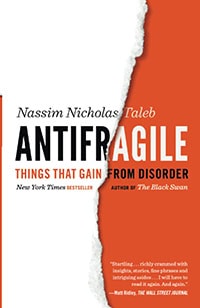
Well, let’s start with physical because it is of such gigantic importance to the young child. Again, this is the gift of working with brain-injured children.
The first moment my father picked up the first severely brain-injured child because he had been working with adults up to that point, I think that was the golden moment for The Institutes. He looked at that little paralyzed three-year-old and he said, “This is unacceptable. This is 100% unacceptable. This child is trapped in a cage the size of his own body and we may not leave him in this cage.”
“We may not have any idea what to do, but we got to do something and we got to start right now.” That was really the beginning. Mobility—right from the beginning for us—was the key. We didn’t start with intellectual things. We started with mobility. As we wanted to learn more about it, we had to return to the well-baby to say, well, how does the well-baby do it? How does he get to walk and run? We had to go backward in his development and study that.
Because we did, we created the developmental profile. Now, that profile literally measures the neurological growth and development of a newborn to a six-year-old, and all the neurological abilities that are critical are cataloged there.
If we are remembered for something 500 years from now—I hope we’re still around driving people crazy 500 years from now, but if we are—I would hope it will be for the developmental profile. It is a fabulous document where you can see quite precisely where a child is, where he is doing very well, and where he is somewhat behind. It shows you how to stimulate that area. It is an incredible tool.
Once we had established that profile, we knew that right from birth, the baby must have the opportunity to move. If we prevent him from moving, we will do him a gigantic disservice.
Now, imagine this, we are coming into an environment—this is now 40, 50 years ago—where the modern baby is beginning to be restricted more and more. He’s put into playpens. He’s put into high chairs. He’s put into jumpers. He’s put into car seats. He’s put into backpacks. If we look at the average modern baby, the most recent study says the American baby spends less than five minutes on his belly free in a day. That is a catastrophe. Our babies, the exact opposite.
The young lady who went to the London School of Economics, her younger brother who got an even more outrageous program when he was a baby than she did, his mother put a pool in his bedroom. I’ve never seen that before. When I saw it, I said to her, “This is disgusting. Get the pool out of his bedroom.” She didn’t.

By the time he was 18 months, he would dive into the deep end of the YMCA pool. She would take off her waterproof watch and throw it into the deep end, and he would dive in, go to the bottom of the pool.
By the way, if you want to empty a pool of 50 people, just get an 18 month old to dive into the deep end. Everybody will leave the pool. Everyone will be sitting on the edge of the pool. He would do that until we finally said, “No, Enrique, enough. It’s time for your nap.” Then, he would scream, and you’d realize he’s an 18-month-old. Up to then, he looked like a scuba diver.
That youngster who was such a terrific swimmer, also a terrific reader, by the time he was two, he was drawing. We didn’t know what he was drawing at first. He told us that they were bridges. We’d given him bits of intelligence about different types of bridges, different styles of bridges, and he loved them. Now, he was trying to draw bridges and houses. I said to his mother, by the time he was three, he’s going to be an architect. He’s obsessed with structures. I have to laugh.
After he had finished his undergraduate education, he wanted to go to graduate school in architecture. He came back to the United States and ended up at Harvard. He is a Harvard-trained architect doing the most gorgeous works. When I win the Powerball, he will make a house for me. His houses are so beautiful.
But why was I telling you about Enrique? He just had a baby. His baby had a crawling track put into the delivery room. We actually have a video of his baby coming down the crawling track in the first two hours of life. Of course, the baby arrives able to crawl because the baby has been moving in utero very vigorously. When the baby comes out, the baby’s all prepared. But what happens?
We need everybody to be themselves. We need everyone to be part of the answer, to be a problem solver. That's what I see in our kids. Share on XWell, if the baby’s in a hospital near The Institutes, the baby will be bundled. Not in one blanket, not in two, not in three-five blankets will be wrapped around that baby. The look on the baby’s face is such a real surprise and horror because now that the baby is paralyzed from the neck down. Having been free for nine months, the baby is now paralyzed. It’s such a horrible thing to do to a baby.
I hope I live long enough so that everybody understands you should never restrict the movement of a tiny baby. They need to be free. They need to be on their bellies as much as possible.
In that crawling track, an inclined track allows them any movement that will move them forward. By the time they’re six, seven weeks, they can begin actually moving forward on their belly. This has gigantic consequences for their vision because when the child moves, he turns his vision on. Mother Nature is tough. If you’re in motion, Mother Nature teaches you—better turn your vision on because you’re going to hit something.
When the baby moves, he’s watching where he’s going. To move, the baby must pump himself up. To pump himself up, he has to do a lot of hooting and hollering. He will do a lot of hooting and hollering but kind of the way when a weightlifter is going to lift up 400 pounds and does a lot of grunting. The baby has to do that too. When he does that, he builds a bigger chest. When he builds a bigger chest, he gets more oxygen to the brain. Then, the brain is happier because that’s the food of the brain.
Our babies—our floor babies—by the time they’re three months old, they’re crawling. They’re getting ready to creep. They’re making all kinds of wonderful, meaningful sounds that mother is responding to. The baby isn’t crying all the time. Most babies just use crying to communicate and that’s such a shame. It’s such an aggressive, ugly communication as compared to using your voice to teach, “Mother, I’m a little hungry now.” “I really like that.” “Oh, get me a little more of that.”
The baby’s clever and the baby knows.
That’s what the baby would like to be doing because the baby’s clever and the baby knows. I’m training mom, I’m training dad, I’m training grandmother. They would like to use more subtle training. But if nobody pays any attention to anything unless they scream, then, of course, they’ll say, I got to use screams if I want this.
This business of the physical program is critical and it starts right at birth. By the time the kid is four or five months old, he should have clocked up at least 400 or 500 yards of crawling a day. You should have done four football fields a day of crawling.
The average nine-month-old American baby at this moment barely moves at all. In fact, people are taking what I would call a car seat and they’re using it in the house to just strap the baby in so the baby is safe.
When I was little, it was a playpen. When I was two, I destroyed my playpen and my father threw it out. He realized this is not a good thing. Now, the playpen looks like a huge space compared to being strapped into a car seat. Daycare centers literally strap the babies into car seats to protect them.
This is horrible physical deprivation. Once you start a baby right at birth, giving him his birthright, his chance to move, he’s going to crawl on his belly, then he’s going to creep. He’s going to push himself up on his hands and knees. He’s going to get all over the house.
By the time he’s 10 months or 11 months, he will pull himself up. At some point, he’ll start to walk. We will not rush that process because we’ve learned that crawling and creeping, it’s money in the bank. It’s an insurance policy to get him neurologically organized.

Unfortunately, what we’re doing right now is the opposite. We’re not allowing him to crawl. We’re not allowing him to creep. We’re putting him in walkers. We’re walking him around. When he does walk, he hasn’t had those two critical stages that helped develop the vision, help develop the chest. It’s a catastrophic thing, it doesn’t help our children at all.
The parents that do this, they’re doing it out of ignorance. I would take my little one, David, for long strolls in the park but I put him in a stroller because then I could cover a lot more ground. I didn’t realize what I was doing. I was holding him back.
Now, in retrospect, I’m like, oh, shoot, I should have had him in the grass. He wouldn’t have gone very far. He would have walked, run, gotten to explore the scenes, and watched the insects. He’s fascinated by little ants and these little tiny creatures. He would have gotten that earlier if I had stopped using that stroller.
Well, you’re absolutely correct. I always think at the mall, they ought to rent large strollers that fit adults so that the three- and four-year-olds can push their parents around. That would be a much more appropriate activity for the three- or four-year-olds to be pushing their tired parents around the mall than the other way around.
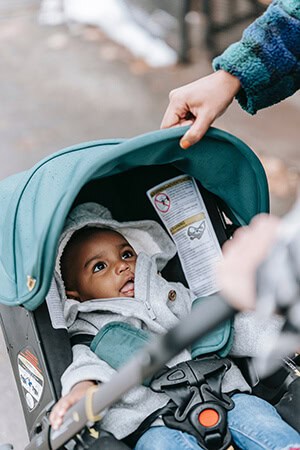
You’re right, I think it’s about safety. We think we’re doing the thing to keep the child safe and clean. It’s kind of a long cut, but we think it’s a shortcut. There’s a lot of mistakes we make with children that we think it’s going to be a shortcut. But it turns out that the way through is the shortcut. Not trying to avoid that stage, but letting the kid do as much of that as possible.
I mean, the 13-month-old wants to jump off the stairs 400 times. It’s dangerous. He wants to roll off the sofa 58 times. He wants to get up on anything he can and pitch himself off. These are dangerous things and they drive mothers crazy. What we propose is to create an environment where he can do that and give him plenty of time to roll off the sofa onto a safe mat. Give him plenty of time to jump off that bottom step onto a safe environment so that his brain gets the experience it’s craving.
Mother Nature is tough. Once the kid is on his feet, there’s that imperative that Mother Nature builds in which is you must move, move, move, move, move. During that period, I would say, 13 months to 22, 23 months, this is the time period when it’s almost impossible to physically keep up with the child. It’s been tried.
I remember maybe 20 years ago, a football player tried to just get up in the morning and do exactly what his 22-month-old did. From the moment they woke up, he just imitated anything and by three hours in, he was exhausted. He couldn’t do it anymore because that’s how active a kid is.
During that time period, we would put all the attention on the physical program and we would soft-pedal the intellectual parts of the program. The physical would get the front seat. When you do that, the kid is thrilled. He develops more rapidly. He’s much safer on his feet. You have a good time too because you’re not worrying. Oh, I can’t get it all in. I’m not getting his attention for this. I’m not getting his attention. No. Put all your eggs in that basket and soon he’ll be very steady on his feet and very safe.
Amazing. I know we have less than 10 minutes left, so I wanted to switch to a lightning-round mode for these last sets of questions. I don’t know how fast you can answer this one, but I think it’s really important for you to share it.
You shared a story of this inconsolable baby that no one could console, could reach, could reason with. I don’t remember exactly the context of the situation, but I just remember you describing how the baby just quieted in your arms. You were able to communicate with it. For its needs to be known to you almost immediately and for you to then take corrective action so that the baby’s needs could get met quickly without it screaming its head off any further.
Could you relate that story quickly?
We may not have any idea what to do, but we’ve got to do something and we’ve got to start right now. Share on XI think this story occurs probably 10 times a day with every mother and child. In this case, this was the end of a long party. It was a long day. It was eleven o’clock. We were packing up to leave. It was a Thanksgiving party.
My niece was screaming and everyone was saying, she’s tired, she’s hungry. Let’s get her into the car, bundle her up. The more people acted to do this, the more she screamed and her mother was holding her. I just snuck up to her because her head was over her mother’s shoulder. I said, “Sophie, if there’s something you need, if there’s something you want, just tell me. I’ll help you.”
Immediately she stops screaming. She just turned to me crying a little and said, ”It’s my purse. My grandmother gave me a new purse and we’re leaving. I can’t find it.” I said, “Well, come on, Sophie, no woman can leave without her purse. That would be absurd. That would be unthinkable. Of course, we’ll find the purse.”
My point was that everybody, all the adults were running around like chickens with their heads chopped off telling her, “You’re tired, you’re hungry, you’re losing it, you’re this,” but no one was asking her, what’s the problem? By the way, her problem was a very sophisticated problem. It wasn’t that she needed to drink, eat, or be in her bed. She needed to be reunited with a very special gift that she had been given by her grandmother. It’s not a baby thing. It’s a more sophisticated consideration.
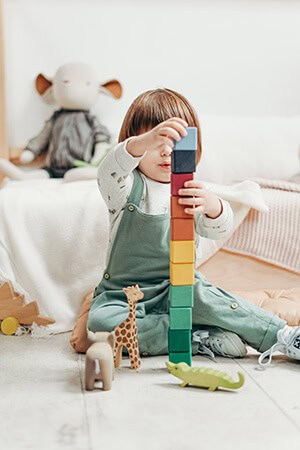
I think the point is, whenever a child cries—and I don’t care if it’s a 3-month-old, an 8-month-old, an 18-month-old, a 9-year-old—like that, we must stop in our tracks. First, we must ask, can I help you? I see there’s a problem. Can we find a solution? Even with a three-month-old baby, you can say, I see that you’re upset. Can we handle this? Yes or no? The baby will stop.
First of all, the baby now stops screaming, that helps a lot in communication because it’s hard to communicate with somebody who’s screaming. My point is, it’s respect for the child. You have to communicate. We can’t just keep telling our children, this is what’s wrong with you. Oh, you’re hungry, you’re thirsty, you need this, you need that. No, no, no, we don’t know.
You’re just tired or you’re just cranky. That just is so dismissive. For those of you who are listening instead of watching the video, what Janet just did was she held up both hands, showing the palm side. One’s a yes and one’s a no. She showed the yes, on one hand, she showed the no. You watch the baby’s eyes to see where he or she looks. That’s the answer. They don’t need to be able to speak yet. It’s amazing. It’s so powerful.
This gets to another point I want to make sure we get across. That is babies know that they’re loved. In most cases, we tell them all the time. We show it. That’s not the issue. It’s the respect, we’re not showing them respect.
It’s time to go. We just swoop them up, pick them right up. We don’t give them any chance to acclimate. We don’t reason with them. We don’t talk to their intellect or their humanity. It’s just like a sack of potatoes. Okay, in the car we go, we’re leaving. What? Who wouldn’t get upset by that?
Right. I mean, you would make a better explanation to your dog. I would. I tell my dog we’re going in the car or I’m going to be in 10 minutes. He listens to me. I don’t know everything that he understands, but I know he’s listening and I know he’s calmer.
I think golden retrievers are really smart, but I don’t think they hold a candle to the human child. When you actually talk to that baby at any age, the baby is listening. When you’re responding to that yes or no, you do that consistently. The baby will come to trust you. The baby will say this is a safe person. They ask me, they listen, they respond.
By the way, you and the baby may not always agree. Maybe the baby will want something that you’re not going to deliver on. But then you can honestly say, I can’t deliver on that right now. I’m sorry. That’s just not possible. When you do it that way, the baby says okay.

Honestly, again, it’s a kind of gift from the hurt kids because so many hurt kids can’t talk when they first start on our program. We have to build that line of communication rapidly. With a tiny kid, I can’t tell you the wild and crazy things we’ve learned from our babies that they really do understand and that they respond to consistently. I’m glad you asked that one because it’s very, very dear to my heart.
Okay, last quick question. What’s the difference between a fact and a symbol in terms of teaching your kid, teaching your baby?
Maybe I’ll change the question a little bit. I think there are things that are arbitrary which we must teach. The fact that we call a chair a chair is arbitrary. There’s no way to intuit that. We must give the baby the names of things. He’s desperate for that information from day one. It’s very important to name everything in the environment to name what we’re doing. The arbitrary things must be taught and then must be taught with a certain frequency, a certain intensity over a certain duration.
There are other things, laws which we think are good to teach. If A equals B and B equals C, then A must equal C. Well, that’s the law. What we do with our kids, we never teach them laws. We would rather give them data and say, “Play around with A, now play around with B.” They’ll say, “But you know what A is equal to B.” And you’ll say, “Oh that’s interesting. How do you know that?” “Look, I can show you, I can prove it.” “Okay. How about C? Look at C.” They’ll look at C and they’ll go, “Hey, B is equal to C.” “Really?“
In the end, a three-year-old may come back to us and say, “You know, if A is equal to B and B is equal to C, then A is equal to C.”
They’re doing the extrapolation
I did way later, but little kids are natural mathematicians. We need to give them the facts they will intuit with the laws. We need to just open the door on those laws for them to peer inside and say, wow, look at that, because there’s so much to learn. The more they can discover, the bigger that realization will be.
Discovery is natural to the child—search and discovery, that’s who kids are. That’s who you and I are when we’re at our best. If you and I go to a new city tonight, we arrive late at night, and we’ve never been there, it’s going to put us right back to being three-year-olds.
We’re both going to say, “Hey, let’s go explore one block before we go to sleep. Let’s see something.” We’re going to be immediately into search and discovery because that is the heart of the human being. That is what makes us special. The more we do with it, the more we are ourselves.
You should never restrict the movement of a tiny baby. They need to be free. They need to be on their bellies as much as possible. Share on XBeautifully said. I’m so inspired again by your work and the impact that you have—you and your team at The Institutes.
If our listeners want to take the course further to learn how to teach their baby how to read, how to do math, how to learn multiple languages, all that sort of stuff—the course that I took, which was amazing—where do they go? Where do they go to read your books, read your blog posts, and all that sort of stuff?
We have a beautiful website. I would take a good walkthrough of that website. If you’re a parent of a brain-injured child, it’s going to show you, give you answers, and show you a pathway. If you’re a parent of a well child, it’s going to do the same.
I’m happy to say that as of tomorrow, up on our website, we have just made two masterclasses: a masterclass for the parents of hurt kids and a masterclass for the parents of well kids. They’re one hour, they’re free, and they’re going to be up on that homepage, I think, in the next 24 hours. That would be a very good place to begin. That will help lead you to the books, to the course, to getting your questions answered. It’s all there.
Thank you so much, Janet. This was fabulous. Thank you, listeners. If you don’t have a young child, you know somebody who has a young child who needs this information so that they can change that child’s life. We’ll catch you in the next episode. This is your host, Stephan Spencer, signing off.


